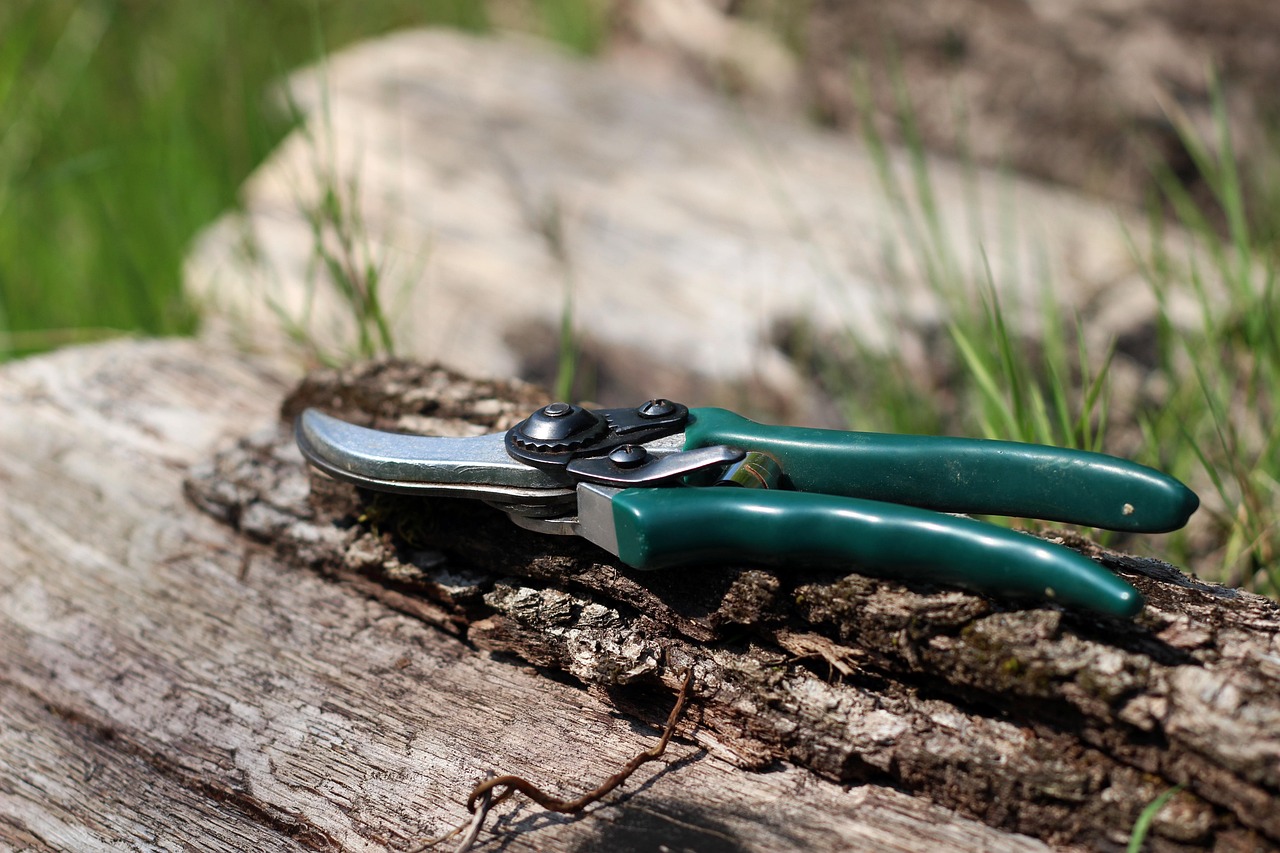Pruning lemon orchard trees is essential for enhancing citrus yield. This practice helps improve air circulation, sunlight penetration, and overall tree health. Proper pruning techniques result in larger and healthier lemons, ultimately boosting the orchard’s productivity.
Lemon trees are a staple in many home gardens and commercial orchards. Known for their tangy fruit and fragrant blossoms, these trees require careful cultivation to thrive. One of the most critical practices in lemon tree care is pruning. Pruning helps manage the shape and size of the tree, promotes healthy growth, and increases fruit yield. Understanding when and how to prune is vital for anyone looking to maximize their citrus harvest.

In addition to enhancing yield, pruning has other benefits. It can prevent disease by allowing better airflow within the canopy. This is particularly important in humid climates where fungal infections can be a concern. Moreover, well-pruned trees can be more resilient to pests, reducing the need for chemical treatments.
Understanding Lemon Tree Growth
Lemon trees are evergreen plants that can live for decades with proper care. They typically grow between 10 to 20 feet tall, depending on the variety and growing conditions. Their growth is influenced by various factors, including soil type, climate, and maintenance practices such as watering and fertilization.
To effectively prune lemon trees, it is essential to understand their growth patterns. Lemon trees generally have three main growth stages:

- Juvenile Stage: In this stage, which lasts for the first few years, the tree focuses on establishing roots and developing a sturdy trunk.
- Mature Stage: Once established, the tree begins to produce flowers and fruit. This stage typically lasts several years as the tree reaches its full height.
- Declining Stage: After many years of fruitful growth, trees may start to decline due to age or environmental stress.
Understanding these stages allows growers to tailor their pruning strategies effectively. For instance, during the juvenile stage, minimal pruning is necessary. However, during the mature stage, strategic cuts can promote better fruit production.
Best Time for Pruning Lemon Trees
The timing of pruning is crucial for maximizing yield. Generally, the best time to prune lemon trees is in late winter or early spring before new growth begins. This timing allows the tree to heal quickly and encourages vigorous new growth as temperatures warm up.
Pruning during this period also helps avoid fruit loss. If pruned too late in the season, trees may lose developing fruit or flowers. Additionally, pruning in dry weather can help reduce the risk of disease.

Essential Pruning Techniques
To achieve optimal results when pruning lemon trees, several techniques can be employed:
- Thinning: This involves removing entire branches or shoots from the tree. Thinning promotes better light penetration and airflow within the canopy.
- Heading Back: This technique involves cutting back the tips of branches. It encourages bushier growth, which can be beneficial for fruit production.
- Cleaning: Removing dead or diseased wood helps maintain tree health and prevents disease spread.
- Shaping: Regularly shaping the tree ensures it maintains an open structure that allows sunlight to reach all parts of the tree.
Each of these techniques plays a specific role in promoting healthy growth and maximizing fruit yield. It is essential for growers to familiarize themselves with these methods and apply them appropriately based on their specific orchard conditions.
Tools Needed for Pruning
Having the right tools is essential for effective pruning. Here are some basic tools that every lemon orchard grower should have:

| Tool | Description | Use |
|---|---|---|
| Hand Pruners | Small scissors-like tool for cutting branches up to ¾ inch thick. | Ideal for general trimming and shaping. |
| Loppers | Larger cutting tool for branches up to 2 inches thick. | Used for thicker limbs that require more leverage. |
| Saw | A pruning saw for larger branches. | Essential for cutting away heavy limbs or dead wood. |
| Gloves | Protective wear for hands. | Prevents injury from thorns and sharp tools. |
Using proper tools not only makes the job easier but also ensures clean cuts that can help prevent disease. Always keep tools sharp and clean to maintain their effectiveness.
Pruning lemon trees correctly can significantly impact overall productivity. By understanding growth stages, timing, techniques, and tools, orchard owners can optimize their citrus yield effectively.
Common Pruning Mistakes to Avoid
While pruning is essential for enhancing the yield of lemon trees, improper techniques can do more harm than good. Understanding common mistakes can help orchard owners avoid setbacks and ensure their trees remain healthy and productive.
- Over-Pruning: Removing too much foliage can stress the tree. It is vital to leave enough leaves for photosynthesis.
- Improper Timing: Pruning at the wrong time can lead to reduced fruiting. Always prune during the dormant season.
- Ignoring Tree Health: Pruning diseased or damaged branches without proper care can spread infections.
- Neglecting Tools: Using dull or dirty tools can create jagged cuts, which may become entry points for pests and diseases.
- Lack of Planning: Failing to have a clear strategy for pruning can result in uneven growth and an unbalanced tree structure.
Avoiding these mistakes is crucial for maintaining the longevity and productivity of lemon trees. Proper planning and knowledge are key components of successful pruning.
Signs That Your Lemon Tree Needs Pruning
Recognizing when a lemon tree requires pruning is vital for maintaining its health and productivity. Here are some indicators that your tree might need attention:
- Overgrown Canopy: If the tree’s canopy is dense, it may restrict airflow and light penetration, leading to poor fruit production.
- Dead or Diseased Branches: Any branches that appear dead or show signs of disease should be removed immediately to protect the tree.
- Pest Infestation: If certain branches are infested with pests, it is often best to prune them away to prevent the spread.
- Low Fruit Yield: If the tree is producing fewer lemons than usual, it may need pruning to encourage new growth.
- Weak Structure: If branches are growing awkwardly or crossing each other, pruning can help improve the tree’s overall shape and strength.
By paying attention to these signs, growers can take timely action to promote a healthier lemon tree and improve overall yields.
Post-Pruning Care for Lemon Trees
After pruning, it is essential to provide care that supports the tree’s recovery and promotes growth. Here are some steps that should be taken:
- Watering: Ensure that the tree receives adequate water after pruning. This helps reduce stress and supports new growth.
- Fertilization: Applying a balanced fertilizer can provide essential nutrients that the tree needs to recover from pruning.
- Pest Management: Monitor for any signs of pests or diseases following pruning. Act quickly if any issues arise.
- Mulching: Adding mulch around the base of the tree can help retain moisture and suppress weeds.
- Monitoring Growth: Keep an eye on new growth and adjust care practices as needed based on how the tree responds.
Providing proper post-pruning care helps ensure that lemon trees bounce back quickly and continue to produce fruit effectively.
The Role of Climate in Pruning Practices
The climate in which lemon trees are grown plays a significant role in determining how and when they should be pruned. Different environmental conditions can influence growth patterns and overall tree health. Here are some factors to consider:
- Temperature: In warmer climates, lemon trees may grow year-round. This necessitates different pruning strategies compared to cooler regions where trees may go dormant.
- Humidity: High humidity can increase the risk of fungal diseases. Pruning for better airflow becomes even more critical in such conditions.
- Rainfall: Excessive rainfall can lead to waterlogged soil, affecting root health. Pruning may need to focus on reducing leaf density to minimize moisture retention on leaves.
- Sunlight: Trees in shaded areas may need more aggressive pruning to ensure they receive adequate sunlight for healthy growth.
By understanding how climate impacts their lemon trees, growers can make more informed decisions about their pruning practices, contributing to a better yield.
Utilizing Technology in Pruning
The advancement of technology has introduced new methods for managing lemon orchards, including pruning. Here are some modern tools and techniques that growers can utilize:
- Drones: Drones can be used for aerial surveys of orchards, allowing growers to assess tree health and identify areas that need pruning from above.
- Sensors: Soil moisture sensors help determine watering needs, ensuring trees remain healthy before and after pruning.
- Mobile Apps: Various applications can assist growers in tracking orchard conditions, scheduling pruning times, and documenting techniques used.
- Agricultural Robots: These machines can aid in automated pruning, reducing labor costs and increasing efficiency.
The integration of technology into traditional practices offers opportunities for improved efficiency and productivity in lemon orchards. Embracing these innovations can lead to better management practices and higher yields.
Organic Pruning Practices for Sustainable Lemon Orchards
As consumers increasingly demand organic produce, many lemon orchard growers are turning to organic practices. Organic pruning focuses on maintaining tree health while avoiding synthetic chemicals. This section will explore the principles and techniques of organic pruning for lemon trees.
Principles of Organic Pruning
Organic pruning emphasizes a holistic approach to tree care. Key principles include:
- Natural Growth Patterns: Understanding the natural growth patterns of lemon trees allows growers to prune in a way that promotes health and productivity.
- Minimize Stress: Organic practices aim to reduce stress on the tree, ensuring it remains healthy and capable of producing fruit.
- Soil Health: Healthy soil contributes to strong tree growth. Organic pruning often coincides with practices that enhance soil quality.
- Pest and Disease Prevention: Organic pruning strategies focus on preventing infestations and diseases without using harmful chemicals.
Organic Pruning Techniques
Several organic pruning techniques can be employed to promote healthier lemon trees:
- Selective Pruning: Rather than removing large sections of the tree, selective pruning targets specific branches to improve air circulation and sunlight exposure.
- Natural Pest Control: Pruning can be used to remove diseased or infested branches, promoting healthier growth without chemical intervention.
- Companion Planting: Incorporating companion plants can naturally deter pests, and proper pruning can help create space for these plants.
- Mulching: Applying organic mulch around the base of the tree can support soil health and reduce competition from weeds.
By following these organic practices, growers can maintain a healthy ecosystem within their orchards while maximizing fruit yield.
Understanding Lemon Tree Varieties for Pruning
Different varieties of lemon trees may have unique growth habits and requirements. Understanding these differences is essential for effective pruning. Here are some common lemon tree varieties and their characteristics:
| Lemon Variety | Description | Pruning Considerations |
|---|---|---|
| Eureka | A popular variety known for its tart flavor and high juice content. | Requires regular pruning to maintain shape and promote airflow. |
| Lisbon | Similar to Eureka but more cold-tolerant. Produces fruit year-round. | Thinning is crucial to prevent overcrowding and ensure fruit quality. |
| Meyer | A hybrid between a lemon and a mandarin orange, sweeter than traditional lemons. | Less aggressive pruning is needed, focusing on shaping and removing dead wood. |
| Ponderosa | A large lemon variety with thick skin, often used for ornamental purposes. | Requires minimal pruning due to its bushy growth habit. |
By tailoring pruning techniques to the specific variety of lemon tree, growers can enhance growth and maximize yield while accommodating the tree’s natural tendencies.
The Impact of Soil Quality on Pruning Outcomes
The quality of soil directly influences the overall health of lemon trees. Healthy soil supports robust root systems, which in turn lead to better fruit production. Factors such as soil composition, pH levels, and nutrient availability all play a role in how effectively lemon trees respond to pruning.
Soil Composition and Nutrients
For optimal growth, lemon trees thrive in well-draining, loamy soil rich in organic matter. The following nutrients are particularly important:
- Nitrogen: Essential for leaf growth; aids in photosynthesis.
- Phosphorus: Promotes root development and flowering.
- Potassium: Enhances fruit quality and resistance to disease.
- Calcium: Important for cell wall structure and overall plant health.
Regular soil testing can help determine nutrient levels and guide fertilization practices. Adjusting soil quality can significantly enhance how well trees respond to pruning efforts.
Improving Soil Quality
To improve soil health, consider the following practices:
- Add Organic Matter: Incorporate compost or well-rotted manure into the soil to enhance nutrient content.
- Aeration: Periodically aerate the soil to promote better drainage and root penetration.
- Cover Crops: Planting cover crops during the off-season can improve soil structure and prevent erosion.
- Mulching: As mentioned earlier, applying mulch helps retain moisture and adds nutrients back into the soil as it breaks down.
By focusing on soil quality, growers can set the stage for healthy lemon trees that respond positively to pruning efforts. This holistic approach leads to improved overall yield and sustainability in citrus production.
Cultural Practices That Support Pruning Success
Cultural practices encompass a range of techniques that contribute to the overall health of lemon orchards. These practices not only support effective pruning but also enhance fruit production. Below are some key cultural practices to consider:
- Irrigation Management: Proper watering is crucial for tree health. Avoid overwatering or underwatering by implementing a consistent irrigation plan based on weather conditions.
- Pest Monitoring: Regularly inspect trees for signs of pests or diseases. Early detection allows for timely intervention before pruning becomes necessary.
- Crop Rotation: If possible, rotate crops in adjacent areas to prevent soil depletion and reduce pest populations that may affect lemon trees.
- Regular Maintenance: Routine checks on tree health, including leaf inspection and trunk examination, can help identify issues before they require extensive pruning.
By integrating cultural practices into their management strategy, orchard owners can create an environment that promotes healthy growth and maximizes the benefits of pruning efforts.
Economic Benefits of Pruning Lemon Trees
Investing time and resources into proper pruning techniques can yield significant economic benefits for lemon orchard owners. By enhancing tree health and maximizing fruit production, growers can see improved profitability. Here are some economic advantages associated with effective pruning:
- Increased Yield: Pruned trees are more likely to produce larger and healthier lemons. Higher yields can lead to increased sales and revenue.
- Cost Savings: Healthier trees that are properly pruned may require fewer pest control measures and less fertilizer, reducing overall expenditures.
- Market Value: High-quality fruit often commands better prices in the market, thus improving profit margins for growers.
- Long-Term Sustainability: Regular pruning ensures that trees remain productive for longer periods, contributing to sustained income over the years.
By focusing on pruning as a critical aspect of orchard management, growers can enhance their economic viability and long-term success in the citrus market.
Community and Environmental Impact
The practices used in lemon orchard management, particularly pruning, can also have wider community and environmental impacts. Sustainable practices promote healthier ecosystems and contribute to community well-being:
- Environmental Stewardship: Implementing organic and sustainable practices reduces the reliance on synthetic chemicals, benefiting local wildlife and promoting biodiversity.
- Community Engagement: Orchards can become community resources where local residents participate in harvests or volunteer for maintenance activities, creating a sense of community and shared responsibility.
- Education: Lemon orchards can serve as educational platforms, teaching visitors and local schools about sustainable agriculture practices and the importance of tree care.
- Food Security: Local citrus production contributes to food security by providing fresh, healthy produce to the community while reducing the carbon footprint associated with transporting food over long distances.
By recognizing the broader impact of their practices, lemon orchard owners can enhance their role within the community while promoting environmental sustainability.
Future Trends in Lemon Orchard Management
The future of lemon orchard management is evolving with advancements in technology and changing consumer preferences. Here are some trends that may shape the future of pruning and overall orchard management:
- Sustainable Practices: As consumer demand for organic produce continues to rise, more growers are likely to adopt sustainable practices that align with environmental stewardship.
- Precision Agriculture: Technologies such as drones and sensors will become more prevalent, allowing for precise monitoring of tree health and targeted interventions.
- Data-Driven Decisions: The use of data analytics will help growers make informed decisions about when and how to prune, optimizing both yield and resource use.
- Diversity in Plantings: Increasingly, growers may explore planting diverse citrus varieties to spread risk and appeal to varying market demands.
By staying informed about these trends, lemon orchard owners can adapt their practices to remain competitive and responsive to changing market conditions.
Final Thoughts
Pruning lemon orchard trees is a vital practice that significantly impacts fruit yield, tree health, and overall orchard productivity. Through proper techniques, understanding tree varieties, and implementing cultural practices, growers can create thriving lemon orchards that produce high-quality fruit.
The economic benefits of effective pruning are substantial, leading to increased yields, cost savings, and improved market value. Additionally, sustainable practices foster environmental stewardship and positively impact local communities. As technology continues to advance, the future of lemon orchard management will likely see even greater efficiencies and innovations.
By embracing these principles and practices, lemon orchard owners can maximize their citrus yield while contributing positively to their communities and the environment. The journey toward a successful lemon orchard is one that requires dedication, knowledge, and a commitment to continual learning in the ever-evolving field of agriculture.
